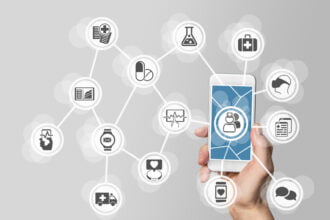I am an independent software security consultant specializing in medical device security and HIPAA compliance in Israel. There are over 700 medical device companies in Israel – all doing totally cool and innovative things from My Dario (diabetes management) to Syneron (medical esthetics).
I am an independent software security consultant specializing in medical device security and HIPAA compliance in Israel. There are over 700 medical device companies in Israel – all doing totally cool and innovative things from My Dario (diabetes management) to Syneron (medical esthetics).
This is a great niche for me because I get to do totally cool projects and work with a lot of really smart people at Israeli medical device vendors helping them implement cost-effective security and privacy compliance + it’s fun learning all the time.
One of my insights is that there is very little connection between and FDA medical device risk assessment and a software security risk assessment. This somewhat counter-intuitive for people who believe in risk management as in banks and insurance companies and law.
Medical device security is an adversarial environment very unlike FDA regulatory oversight.
FDA medical device regulatory oversight is about complying in a reliable way with standard operating procedures and 20 year old software standards. Software security is about mitigating the unexpected in a reliable way.
FDA believes that conformance with this guidance document, when combined with the general controls of the Act, will provide reasonable assurance of the safety and effectiveness…
FDA recognizes several software consensus standards. A declaration of conformity to these standards, in part or whole, may be used to show the manufacturer has verified and validated pertinent specifications of the design controls. The consensus standards are:
- ISO/IEC 12207:1995 Information Technology – Software Life Cycle Processes
- IEEE/EIA 12207.O-1996 Industry Implementation of International Standard ISO/IEC12207:1995 (ISO/IEC 12207) Standard for Information Technology – Software Life Cycle Processes
Medical device security is about attackers and totally unpredictable behavior
Medical device security is about anticipating the weakest link in a system that can be exploited by an attacker who will do totally unpredictable things that were inconceivable last year by other hackers, let alone 20 years ago by an ISO standards body.
You cannot manage unpredictable behavior (think about a 2 year old) although you can develop the means for anticipating threats and responding quickly and in a focused way even when sleep-deprived and caffeine-enriched.
For a person like me (an independent security consultant with a graduate degree in physics and a high sense of self-worth), there is an overwhelming temptation to show clients how dangerous their security vulnerabilities are and how much you can add value to their product.
Winning friends and influencing client in the threat analysis
This is not however a strategy guaranteed to win friends and influence people (and win repeat business) – i.e. forcing the client to do the “right” things.
Instead of saying – “that is a really bad idea, and you will get hacked and destroy your reputation before your QA and RA departments get back from lunch“, I have realized that it is better to take a more nuanced approach like:
“I see that you are transferring credentials in plain-text to your server in the cloud. What do you think about the implications of that?“. Getting the customer to think like an attacker is better than dazzling and intimidating the client which has short-term ROI for your ego and poor probability of improving the clients’ medical device security.
How did I reach this amazing (slow drum roll…) insight?
About 3 years ago I read a book called Search Inside Yourself: The Unexpected Path to Achieving Success, Happiness (and World Peace) and I learned an idea from Zen Buddhism called – “Don’t take action, let action take you“. I try to apply this approach with clients as a way of helping them learn themselves and as a way of avoiding unnecessary conflict. The next step in my Zen Buddhist evolution was getting acquainted with another concept from called Shoshin:
Shoshin (初心) means “beginner’s mind”. It refers to having an attitude of openness, eagerness, and lack of preconceptions when studying a subject, even when studying at an advanced level, just as a beginner in that subject would.
For advanced medical device security consultant like me, this means doing the exact OPPOSITE of what you normally do in the course of a security threat assessment:
- Let go of the need to add value – you do not have to provide novel security countermeasures in your threat model all the time. Sometimes, doing the basics (like hashing and salting passwords) is all the value the client needs.
- Let go of the need to win every argument – you do not have to provide novel security countermeasures in your threat model and show the client why their RA (regulatory assurance) consultant are making fatal mistakes.
- Ask the client to tell you more – you can ask what led the client to a particular design decision. You may learn something about their system design alternatives and engineering constraints. This will help you design novel security countermeasures for their medical device.
- Assume you are an idiot – this is a corollary of not taking action. By being neutral, and assuming you are an idiot, you disable your ego for a few moments and you get into a position of accepting new information which may help you design novel security countermeasures for their medical device….
Thank you to James Clear for his insightful post – Shoshin: This Zen Concept Will Help You Stop Being a Slave to Old Behaviors and Beliefs and inspiring the application of Shoshin to medical device security threat modeling.







